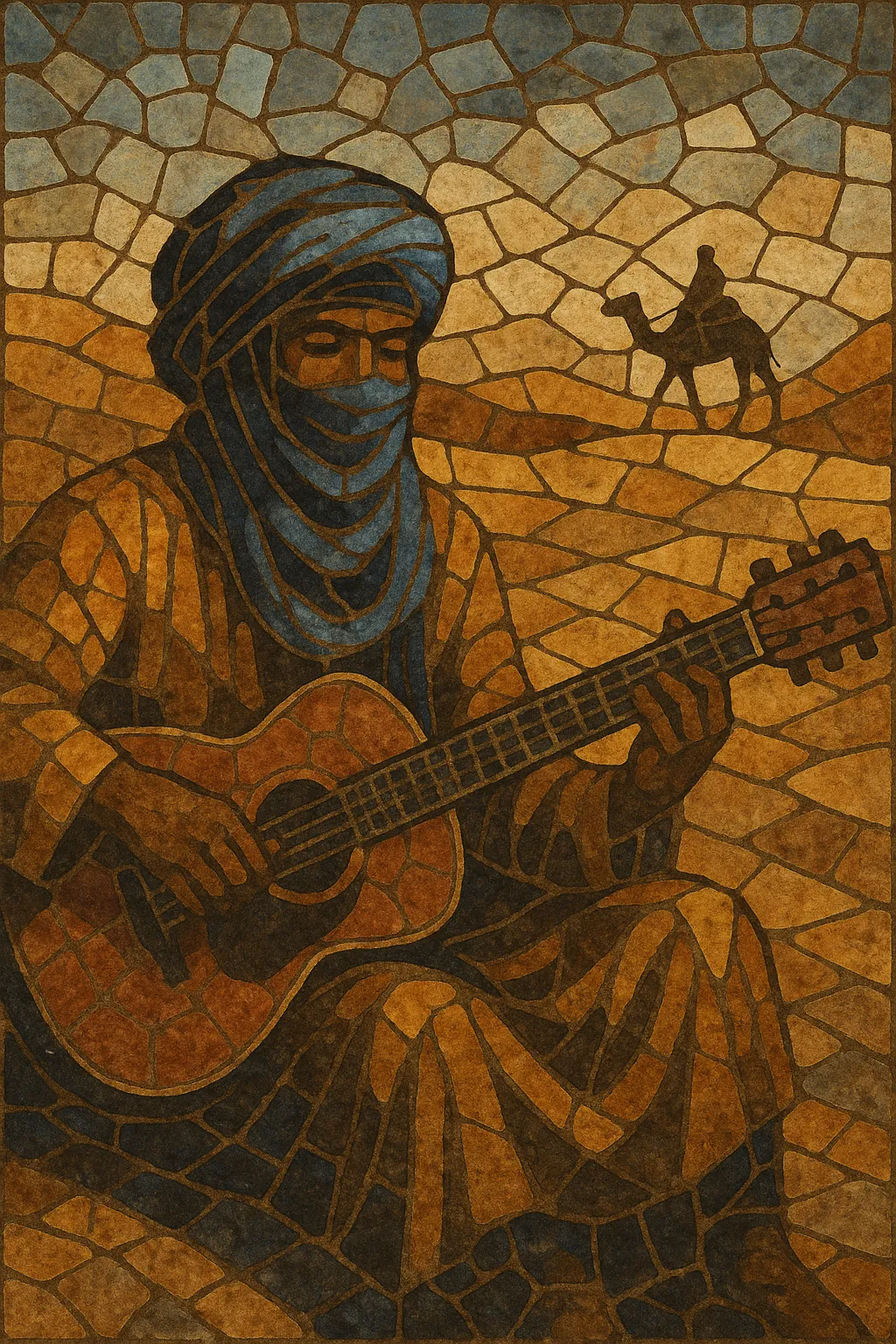Desert blues is a Saharan/Sahelian guitar tradition that blends West African modal and pentatonic song forms with the timbre and cyclical riffing of electric blues and rock. Characterized by hypnotic ostinatos, handclaps or calabash percussion, and call-and-response vocals, it creates a trance-like propulsion often compared to a camel’s gait across the dunes.
The style commonly features pentatonic and Dorian-leaning melodies, droning bass strings, and interlocking guitar parts bathed in warm overdrive and roomy reverb. Lyrics, frequently sung in Tamasheq, Songhai, or Bambara, speak poetically about exile (assouf), nomadism, resistance, and the harsh beauty of desert life.
Desert blues crystallized in the Sahel during the 1970s, drawing on deep West African traditions (griot epics, takamba rhythms) alongside the electric guitar vocabulary of American blues and rock. In Mali, Ali Farka Touré adapted Songhai/Malian melodic language to guitar, showing striking kinship with the blues’ pentatonic forms. Among Tuareg communities in exile camps across Libya and Algeria, a plugged-in, politicized guitar style—later called ishumar/assouf—emerged, marrying local poetry and rhythms to amplified, cyclical riffs.
In the 1990s, recordings by Ali Farka Touré for international labels brought the sound to global audiences, framing it as both ancestral to and conversant with the blues. Parallel Tuareg currents coalesced into groups like Tinariwen, whose cassette-culture songs of longing and resistance circulated widely across the Sahara before reaching Western stages.
The 2000s saw desert blues gain major visibility through tours, collaborations, and the Festival au Désert in Timbuktu (founded 2001). Bands such as Tinariwen, Etran Finatawa, Terakaft, and Tamikrest became fixtures of world and rock circuits. Producers and labels helped document the scene, highlighting both acoustic calabash-driven ensembles and fuzz-laden electric bands.
Artists including Bombino, Mdou Moctar, Imarhan, and Songhoy Blues expanded the palette with denser distortion, psych-rock flourishes, and indie/alternative production. Political instability in the region forced periods of exile, but also catalyzed a vibrant diaspora network. Today, desert blues thrives as a living tradition—equally at home in intimate desert gatherings and on global festival stages—continually blending Sahelian groove with the expressive language of the guitar.


